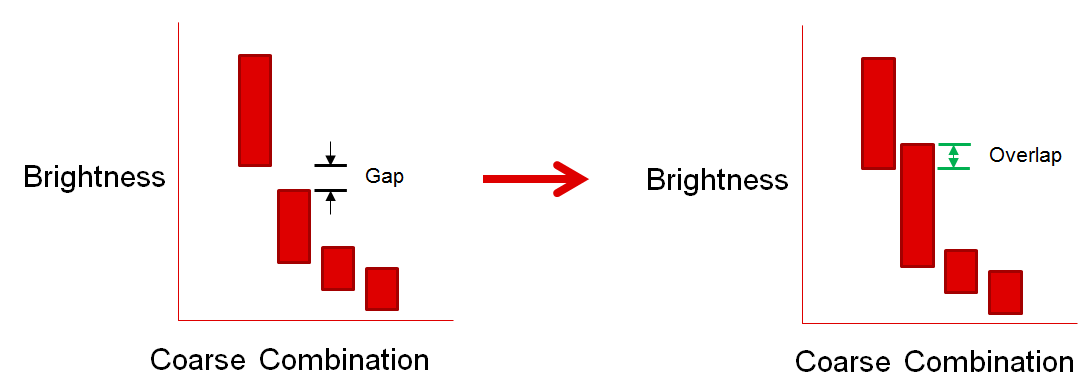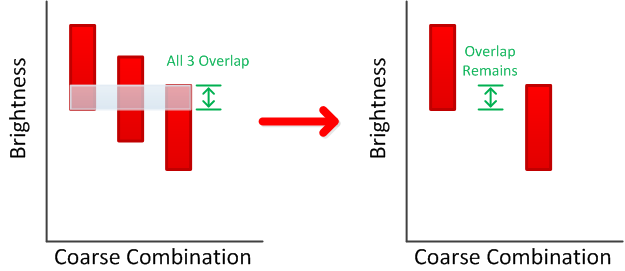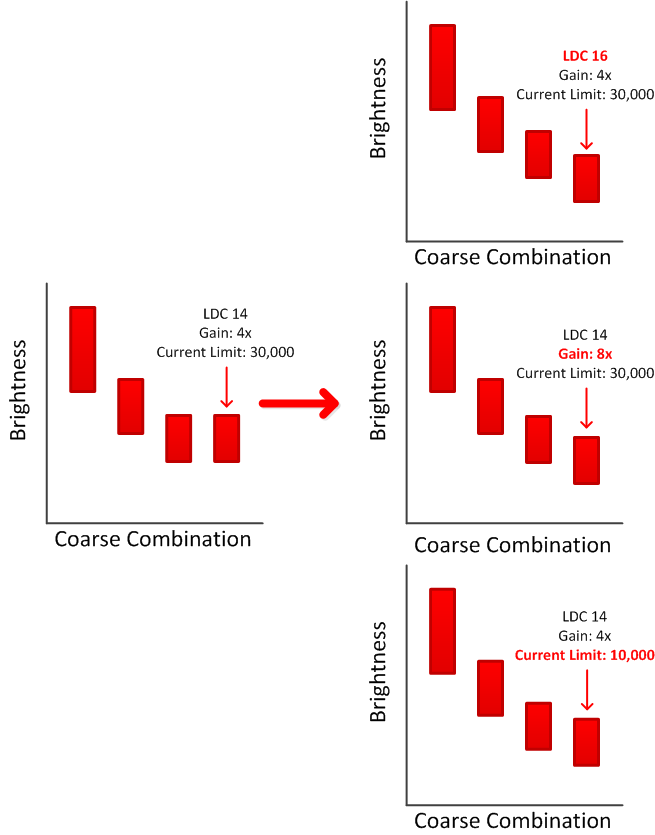DLPU066A March 2018 – April 2022 DLP3030-Q1
5.2 Coarse Combination Determination
The ultimate goal in determining proper coarse combinations is to allow the system to achieve a 5000:1 dimming ratio while maintaining a constant color point. Enough unique coarse combinations should be chosen so there are no brightness gaps in the system output, but should in practice be as few as possible to decrease calibration time. Three main problems arise when determining coarse combinations on a new DLP3030-Q1 based PGU.
- Gaps in output brightness
- Too much overlap between adjacent coarse combinations
- Achieving minimum brightness targets
 Figure 5-2 Closing brightness gaps between coarse combinations
Figure 5-2 Closing brightness gaps between coarse combinations Figure 5-3 Removing heavily overlapping coarse combinations to decrease calibration time
Figure 5-3 Removing heavily overlapping coarse combinations to decrease calibration time Figure 5-4 Changing coarse combination parameters to change the maximum and minimum brightness ranges. Increase LDC Index, increase optical feeback gain, or decrease current limit to decrease the minimum brightness for a single coarse combination.
Figure 5-4 Changing coarse combination parameters to change the maximum and minimum brightness ranges. Increase LDC Index, increase optical feeback gain, or decrease current limit to decrease the minimum brightness for a single coarse combination.